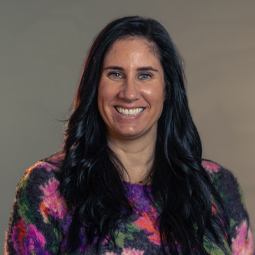USA Swimming News
Pacific Swimming Diversity, Equity, and Inclusion Athlete Representative Provides Free Resource for Inclusion in Swimming

February is Black History Month, and we are proud to spotlight USA Swimming athlete Oakley Briskman, who took it upon herself to research the history of inclusion in our sport and create some resources for members to take advantage of. The best part? These resources are free, and she wants to help you implement them locally. Access the free guided PowerPoint presentation here and directions here. Watch the full conversation on the USA Swimming Network.
Briskman, who is an athlete representative on the Pacific Swimming’s Diversity, Equity, and Inclusion (DEI) committee and for her club, Alameda Gators, wanted to start a swimming team at her high school.
“I attend a small public charter school in Oakland, California, where most of the student body is Black and Brown,” Briskman said. “One of the things my school emphasizes is student leadership. So, if a club or team doesn’t exist, it’s on the student who is interested in starting it to take the initiative and gather students to really make it happen. As a competitive swimmer, I wanted the opportunity to experience high school swimming.”
After learning that many of her peers either didn’t know how to swim or did not feel safe around the water, she decided to investigate the history of why that was.
“Swimming isn’t just any skill, it’s actually a lifesaving skill,” Briskman emphasized. “Giving the opportunity to as many people in our community to learn how to swim and get involved in swimming is not just giving them another skill. It’s actually helping to save their lives.”
Once Briskman researched the history of African Americans in and around the pool, she created a PowerPoint to help educate members and promote inclusivity in her own community.
“Oakley started this when she was probably 16 (years old) or earlier,” Pacific Swimming DEI Committee Administrative Vice-Chair and former National DEI Committee member Verónica Hernández said. “Her first project was to try and start a swim team at her school. When she realized that there were, one, not very many people who knew how to swim, and two, weren’t many people who felt like they could even be part of a team, she started looking into doing some sort of workshop with her school to give information.”
Her presentation became a customizable PowerPoint for USA Swimming members to use, allowing individuals to lead their own conversations with their clubs and LSCs.
“In all my years in a diversity role in Pacific Swimming, I’ve never had an athlete do this type of research and develop this type of program,” Pacific Swimming DEI Committee Chair and former National DEI Committee member Kent Yoshiwara said. “It was really awesome for this to get started from the athlete perspective.”
Her resource has already impacted many members, as she has presented it at Pacific Swimming’s Athlete Leadership Summit and the Pacific Swimming and Sierra Nevada DEI camp.
“This year, Oakley stood up and asked if she could give a DEI presentation (at the Pacific Swimming Athlete Leadership Summit),” Hernández said. “For an athlete – a teenager – to volunteer to present in front of their peers, it was amazing…she put together all the ideas. She did all of the work.”
Are you interested in implementing the presentation in your community?
“My presentation is available to anyone who wants to give it,” Briskman said. “I’ve created a one-pager to help guide you through the process. I will also make myself available to anyone who wants to give the presentation, who wants to get involved or might need a little help getting involved.”
On the value of her presentation, Briskman said, “Education really is power. We need to acknowledge the past to create a better and more inclusive future for swimming.”
Hernández shared her feelings as she reflected on the importance of this education, which is available for anyone to take advantage of, regardless of ethnicity or race.
“It’s the recognition of someone who is outside of the community to say, ‘Why is this happening?’,” Hernández heartfeltly shared. “To take the steps to not only find out for themselves, but then to say, ‘Hey, this is a problem, and how do I tell someone else about this?’ It’s just so impactful and so meaningful to me, a person coming from a community who didn’t have the opportunity to have swim lessons or even know this was a space I could even be a part of…It feels really good to be seen, and I hope other people feel seen because of this (resource).”
View the entire conversation with USA Swimming Director of Diversity, Equity, and Inclusion, Leland Brown III, Briskman, Hernández, and Yoshiwara on the USA Swimming Network. Access the customizable PowerPoint here, with the directions and one-pager here.
Do you know a member making an impact at the local level who should be spotlighted? Contact USA Swimming Corporate Communications Manager Devonie Pitre at dpitre@usaswimming.org to share their story.

